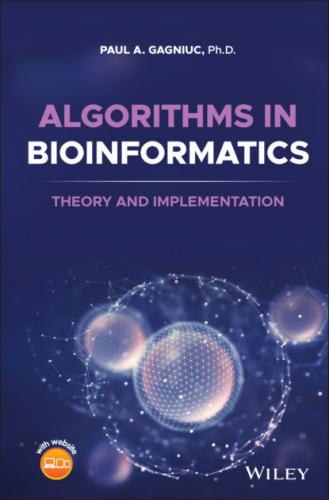Table of Contents
1 Cover
5 Preface
7 1 The Tree of Life (I) 1.1 Introduction 1.2 Emergence of Life 1.3 Classifications and Mechanisms 1.4 Chromatin Structure 1.5 Molecular Mechanisms 1.6 Known Species 1.7 Approaches for Compartmentalization 1.8 Sizes in Eukaryotes 1.9 Sizes in Prokaryotes 1.10 Virus Sizes 1.11 The Diffusion Coefficient 1.12 The Origins of Eukaryotic Cells 1.13 Origins of Eukaryotic Multicellularity 1.14 Conclusions
8 2 Tree of Life: Genomes (II) 2.1 Introduction 2.2 Rules of Engagement 2.3 Genome Sizes in the Tree of Life 2.4 Organellar Genomes 2.5 Plasmids 2.6 Virus Genomes 2.7 Viroids and Their Implications 2.8 Genes vs. Proteins in the Tree of Life 2.9 Conclusions
9 3 Sequence Alignment (I) 3.1 Introduction 3.2 Style and Visualization 3.3 Initialization of the Score Matrix 3.4 Calculation of Scores 3.5 Traceback 3.6 Global Alignment 3.7 Local Alignment 3.8 Alignment Layout 3.9 Local Sequence Alignment – The Final Version 3.10 Complementarity 3.11 Conclusions
10 4 Forced Alignment (II) 4.1 Introduction 4.2 Global and Local Sequence Alignment 4.3 Experiments and Discussions 4.4 Advanced Features and Methods 4.5 Conclusions
11 5 Self-Sequence Alignment (I) 5.1 Introduction 5.2 True Randomness 5.3 Information and Compression Algorithms 5.4 White Noise and Biological Sequences 5.5 The Mathematical Model 5.6 Noise vs. Redundancy 5.7 Global and Local Information Content 5.8 Signal Sensitivity 5.9 Implementation 5.10 A Complete Scanner for Information Content 5.11 Conclusions
12 6 Frequencies and Percentages (II) 6.1 Introduction 6.2 Base Composition 6.3 Percentage of Nucleotide Combinations 6.4 Implementation 6.5 A Frequency Scanner 6.6 Examples of Known Significance 6.7 Observation vs. Expectation 6.8 A Frequency Scanner with a Threshold 6.9 Conclusions
13
7 Objective Digital Stains (III)
7.1 Introduction
7.2 Information and Frequency
7.3 The Objective Digital Stain
7.4 Interpretation of ODSs
7.5 The Significance of the Areas in the ODS
7.6
